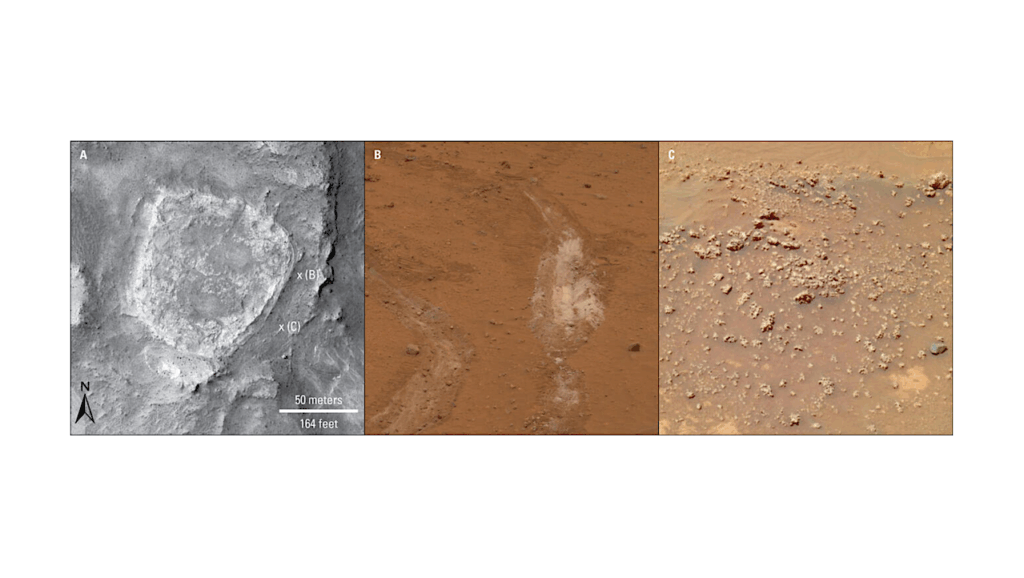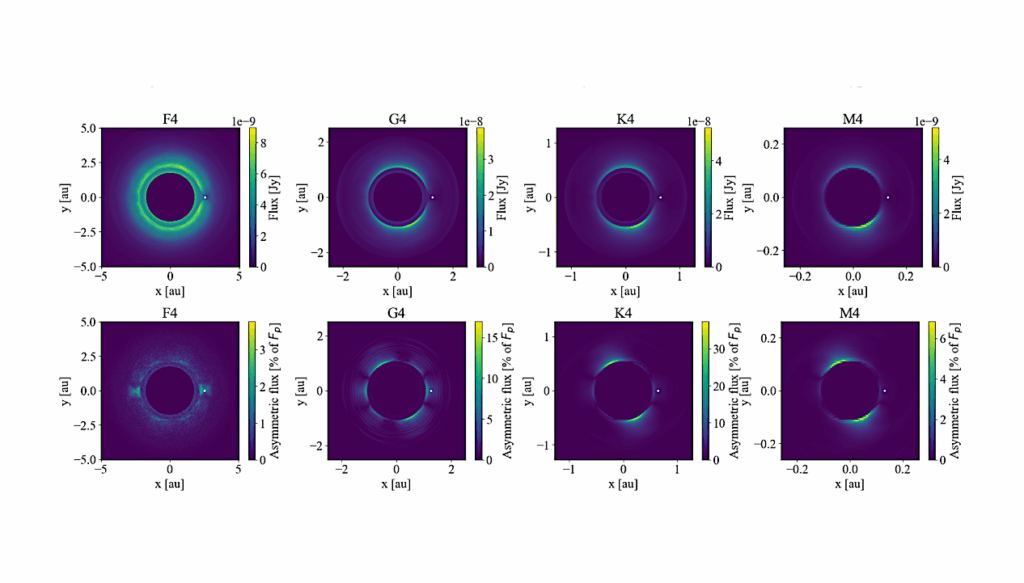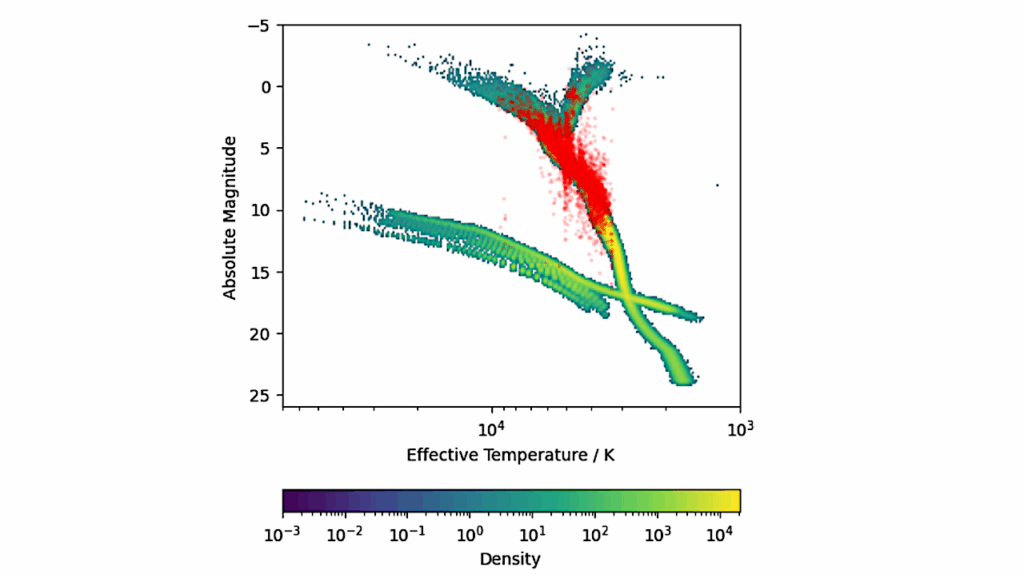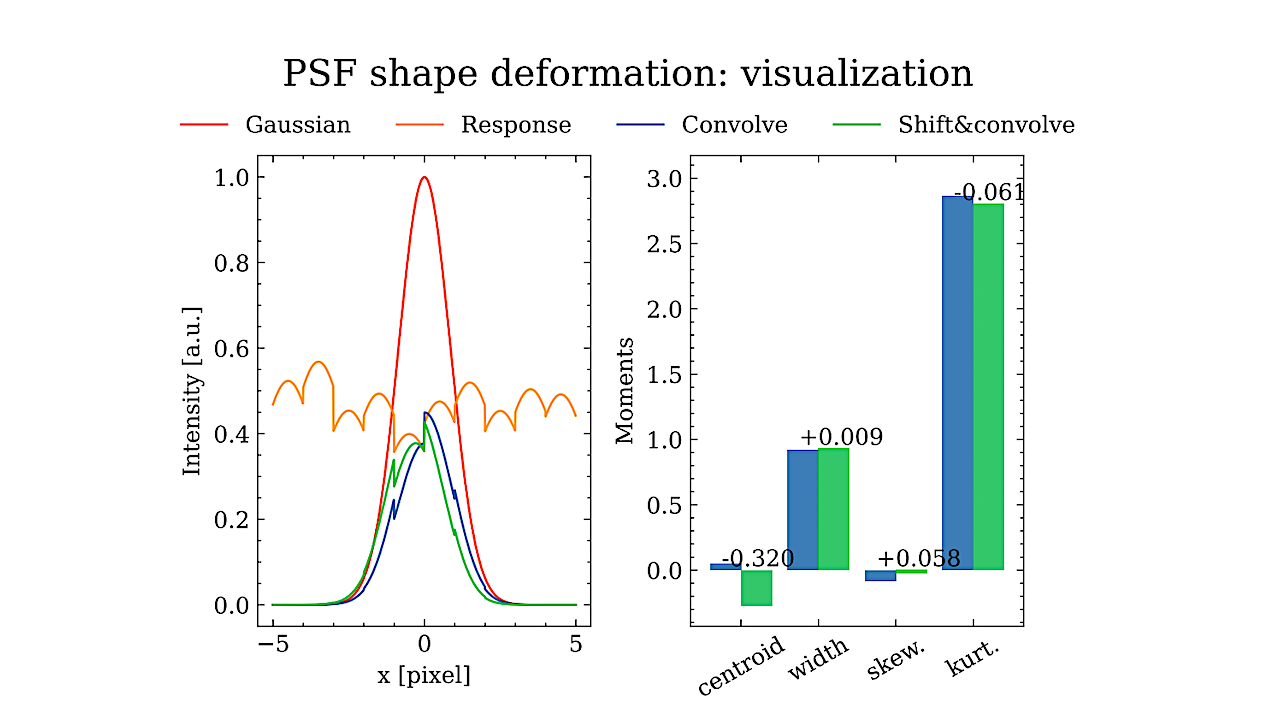Now Reading: The Source Of Hydrogen In Earth’s Building Blocks
-
01
The Source Of Hydrogen In Earth’s Building Blocks
The Source Of Hydrogen In Earth’s Building Blocks
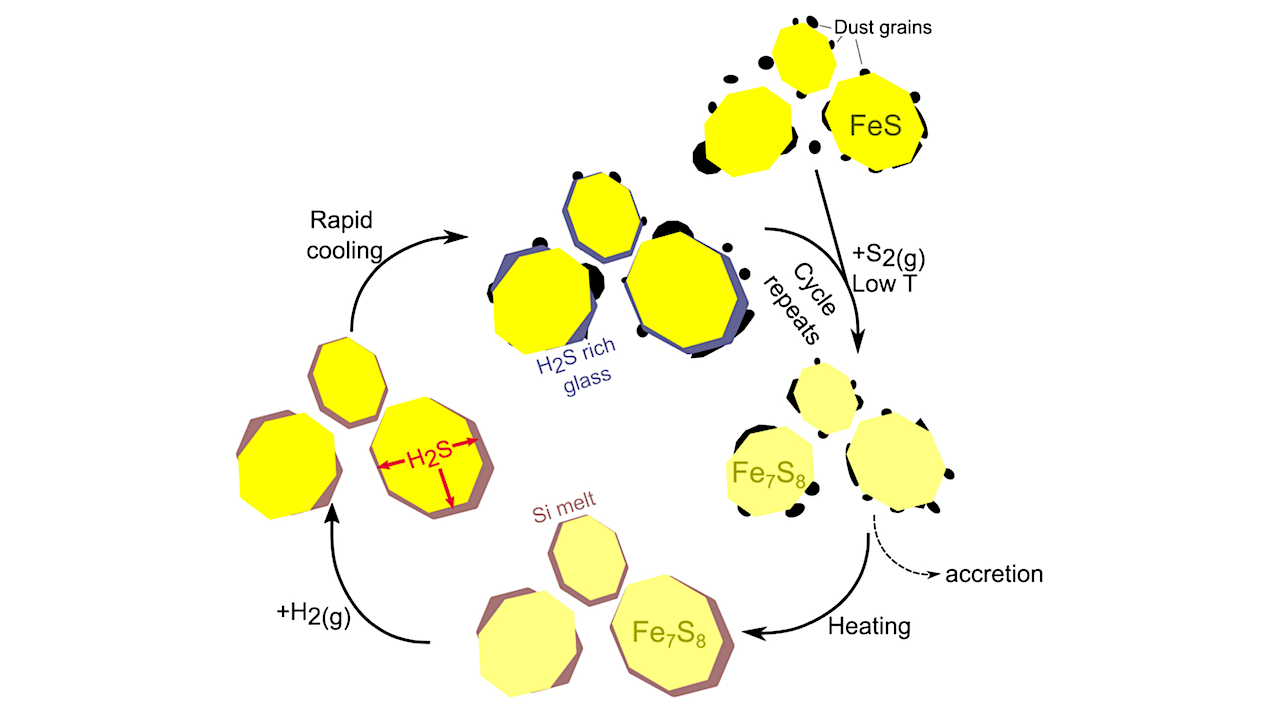

Schematic outlining the process through which H could be sequestered into ECs. Firstly, submicron FeS grains that become coated in dust particles in the solar nebula are transformed into pyrrhotite at low temperatures in a high fS2 environment (e.g. Zolensky and Thomas, 1995). Next, during flash heating events, a sacrificial catalysis reaction with H2 at produces H2S (Cabedo et al., 2024), which is trapped in silicate melt that sits around the grains of sulphide formed when the dust grains melt. Finally, this assembles rapidly cools, produce sulfide grains that are coated in silicate glass, which hosts trapped H2S. This process can repeat, with further dust accumulating onto the surface of the Si-rich glass after it first forms. During/following low temperature sulfidation, accretion can occur to form planetesimals. This cycle results in pyrrhotite existing on a sub-micron length scale surrounded by Hsingle bondS bearing silicate glassy material, consistent with our S-XANES measurements. — Icarus
Due to their isotopic similarity to terrestrial rocks across a range of elements, the meteorite group that is thought to best represent Earth’s building blocks is the enstatite chondrites (ECs).
Because of ECs’ nominally anhydrous mineralogy, these building blocks have long been presumed to have supplied negligible hydrogen to the proto-Earth. However, recent bulk compositional measurements suggest that ECs may unexpectedly contain enough hydrogen to readily explain Earth’s present-day water abundance. Together, these contradictory findings mean the contribution of ECs to Earth’s hydrogen budget is currently unclear.
As such, it is uncertain whether appreciable hydrogen is a systematic outcome of Earth’s formation. Here, we explore the amount of hydrogen in ECs as well as the phase that may carry this element using sulfur X-ray absorption near edge structure (S-XANES) spectroscopy. We find that hydrogen bonded to sulfur is prevalent throughout the meteorite, with fine matrix containing on average almost 10 times more Hsingle bondS than chondrule mesostasis. Moreover, the concentration of the Hsingle bondS bond is linked to the abundance of micrometre-scale pyrrhotite (Fe1-xS, 0 < x < 0.125).
This sulfide can sacrificially catalyse a reaction with H2 from the disk at high temperatures to create H2S, which could be dissolved in adjoining molten silicate-rich material. Upon rapid cooling, this assemblage would form pyrrhotite encased in submicron silicate-rich glass that carries trapped H2S. These findings indicate that hydrogen is present in ECs in higher concentrations than previously considered and could suggest that this element may have a systematic, rather than stochastic, origin on our planet.
The source of hydrogen in earth’s building blocks, Icarus
Astrobiology, Astrogeology, Astrochemistry,
Stay Informed With the Latest & Most Important News
Previous Post
Next Post
-
 012024 in Review: Highlights from NASA in Silicon Valley
012024 in Review: Highlights from NASA in Silicon Valley -
 02Panasonic Leica Summilux DG 15mm f/1.7 ASPH review
02Panasonic Leica Summilux DG 15mm f/1.7 ASPH review -
 03How New NASA, India Earth Satellite NISAR Will See Earth
03How New NASA, India Earth Satellite NISAR Will See Earth -
 04And Thus Begins A New Year For Life On Earth
04And Thus Begins A New Year For Life On Earth -
 05Astronomy Activation Ambassadors: A New Era
05Astronomy Activation Ambassadors: A New Era -
06SpaceX launch surge helps set new global launch record in 2024
-
 07Space Force plans new ‘Futures Command’ amid pressure to speed up modernization
07Space Force plans new ‘Futures Command’ amid pressure to speed up modernization













